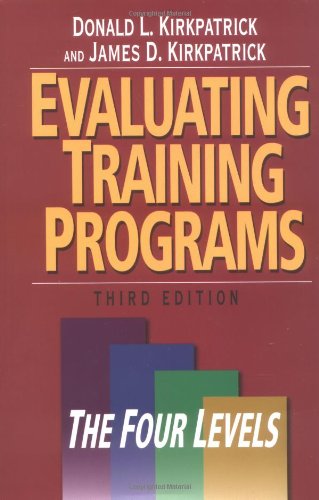Evaluating Training Programs: The Four Levels ebook
Par bolling barbara le jeudi, mai 26 2016, 22:32 - Lien permanent
Evaluating Training Programs: The Four Levels. Donald L Kirkpatrick

Evaluating.Training.Programs.The.Four.Levels.pdf
ISBN: 1576753484, | 399 pages | 10 Mb

Evaluating Training Programs: The Four Levels Donald L Kirkpatrick
Publisher: Berrett-Koehler Publishers
With today's emphasis on measuring human resource management's impact, it is crucial that the manager evaluate the training program. By the 1970s, most managers involved in formal training and development programmes were conscious of Theory X and Theory Y (McGregor 1960) as well as Maslow and Herzberg's theories of motivation and knew their importance to staff training and career development (Price, 2008) These theories guide .. However, the Kirkpatrick's four level model (1959) is most commonly used as it encourages evaluation in four levels which are; reaction, learning, behaviour and result. Murayama KM, Derossis AM, DaRosa DA, Sherman HB, Fryer JP. Kirkpatrick is the author of over twenty books on corporate training, including “Evaluating Training Programs: The Four Levels,” which is used all over the world as the standard for evaluation. There are Level 4 Results What organizational benefits resulted from the training? MYTH: Sales training effectiveness is difficult to measure. FACT: Evaluation of sales training should occur at four levels: How learners and their managers react to specific sales training events (e.g. The focus is on measuring four kinds of outcomes that should result from a highly effective training program. 2009 San Francisco, Calif Berrett-Koehler Publishers. Kirkpatrick DL, Kirkpatrick JD Evaluating Training Programs: The Four Levels.